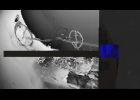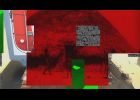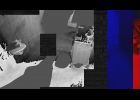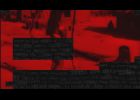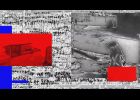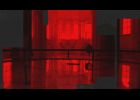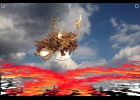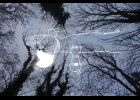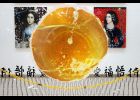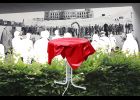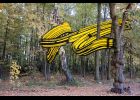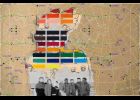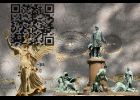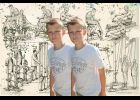Appareil et caméras chez Vilém Flusser, objections et critique
For Vilém Flusser, apparatus is a term of primary importance. Key to the post-historical age, it tends to designate a programmed functioning within which the players or functionaries, that we will be from now on, are activated. The problem is to define such a notion, Flusser relies on a questionable conception of photography and of the “photographable.” The point of this paper is not to consider, as Flusser puts it, what can be “left for us,” but to consider more optimistically what can be done “with” the new recording devices. Considering that history is not finished, we will propose, following the suggestions of Walter Benjamin, to think of technique as open to a less regulated, freer and potentially more critical understanding.
Interview
This is a short interview with Claude Lutz, the founder and director of Édition Circé, which in 1996 published a French translation of Vilém Flusser’s Für eine Philosophie der Fotografie. Three more translations followed: Petite philosophie du design (2002), Essais sur la nature et la culture (2005) and La Civilisation des médias (2006).
Les Rendez-vous manqués. Flusser, la France et la photographie
Flusser was based in France for the last sixteen years of his life. He spoke reasonably good French, but he published very little in France, either books or articles, gave few conferences or lectures, and never became part of French intellectual circles. While some of it may be due to his modest knowledge of French and to his living in a small southern village far away from Paris, the main reason is probably that he was an outsider, not a member of academia and not a thinker who could nicely fit in the “French Theory” dogma. Even after his death he did not attract much interest in French intellectual circles until recently. This essay analyzes this “missed encounter” principally from the viewpoint of photography; it notes however that interest in his concepts has been growing in France for several years, goes on to suggest ways to cultivate and extend this trend.
L’inter-code
In L’inter-code, a pseudo-random algorithm controls the appearance of zones of images and zones of text in mutual exclusion over the screen. The images include animations based on 3D models of objects exhibited in the Musée des Arts et Métiers in Paris: astronomical instruments which measure the infinitely big, a cyclotron which probes the subatomic world and above all, photo cameras adapted to the measure of space (photogrammetry). The images also include footages taken by the German ethnologist Theodor Koch-Grünberg in 1911 while living with the Taulipang tribe in Brazilian Guyana. The texts where extracted from the work of the philosopher Vilém Flusser, Towards a Philosophy of photography, which inspired this work. Strengthened by the soundtrack, this animation opposes Images and Texts in line with the ideas of Vilém Flusser: texts and images confront one another in the representation of the real world. This dialectical relationship, whose synthesis is yet to be discovered, is matched in the video by another opposition: tribal men living in equilibrium with nature, contrasting with the divergences of technical progress. By representing the biased relationship mankind maintains with the real when it is coded by texts and by images, L’inter-code seeks to question photographic image, not as the neutral product of a technique but as a complex construction that embeds a risk: the danger of increasing the distance between mankind and the world he inhabits. L’inter-code questions the possibilities and limits of science and its materialization in technology.
Die Verbesserung von Beobachtung
An artistic theory is different from a scientific one. The artist theorizes by addressing the breaking point of modernity, which is characterized by a change from considering a work to be a conceptual, and considering it to be a physical object. The artist describes this as a part of his art. Vilém Flusser analyzes the camera (the black box) in relation to administrative, economic, political, social apparatuses. Roland Barthes considers pictures from the double perspective of studium (the scanning process) and punctum (the captivating moment). In the present case, the artist’s theory and the photo collages bearing the title Photo Shop Massacre are to be understood in their conceptual intention as an indication of the actual massacre that is taking place around us.
To Save Philosophy in a Universe of Technical Images
Philosophy, origin and apotheosis of the Humanist project, seems to have been surpassed in a world of extreme and ubiquitous automated processes. Automation threatens to truly “taken control”, and subordinate all human activity to the functions inscribed in the machine. The kaleidoscopticon of contemporary culture seems to indicate a return to pre-literate “magical thinking” but it is in fact a product of highly literate scientific, technical literacy. Flusser urges us to encounter the persistent importance of causal, textual thinking at work inside every apparatus to help steer the transformations, which are taking place in ourselves and in our world. Flusser makes this plea alongside a contention that linear, causal, conventional textual practices are no longer adequate to convey our ideas and experience highly in-formed by the new technologies. He exhorts us to use “technical images”. It becomes evident that Flusser’s project is to save philosophy, or restate the importance of philosophical practices, in an age where literacy has gone sub rosa. Using examples from Flusser’s experimental collaborations with artists Louis Bec and Fred Forest, this short essay will attempt to elaborate what Flusser means with philosophical practice, which uses technical images.
"Für eine Phänomenologie des Fernsehens" II: das Schicksal eines Texts und der Wechsel zur Fotografie
Although Vilém Flusser’s text „Für eine Phänomenologie des Fernsehens“ is only 21 pages long there is no other text in his oeuvre that shows the same concern for philosophical and methodological reflection. A first, incompletely elaborated version for the New York symposium in January 1974 was published with a four years delay. However, the definitive version Flusser provided has not been published. A new object of research is superimposed onto the unlucky old enterprise of a theory of television.
Che cosa legittima la fotografia? La produzione di un incontro tra Flusser e Vaccari
This paper describes the meeting between Flusser and the Italian artist and theorist Franco Vaccari in 1985 and 1987, and focuses on the philosophical, epistemological, and ethical basis of photography. The text is linked to the interview with Angelo Schwarz and the pictures at the end of this issue (Flusser in Italy). “What legitimates photography?” was a question proposed in the context of the symposium Torino Fotografia 1985. Today, the question is asked to address the “encounter” between Vilém Flusser and the artist Franco Vaccari. The latter is followed by a magnifying lens looking at the documentation of the real meeting between the two in 1985, but without the intention of finding the “proof.” While for Flusser, the invention of photography points to the beginning of a Post-Historical era in which he examines concepts of freedom and responsibility by combining the notion of the apparatus with the experience of exile, Vaccari activates the apparatus, and at the same time, lets his work be activated by it. In this way, the responsibility belongs to the apparatus itself, and the concept of freedom becomes a modus vivendi in which the photographer uses the apparatus to create meanings and “has a chance to discover what he didn’t know.” This process is weaved in the essay with interventions by Roberta Valtorta, who offers a socio-political overview of the photography context in Italy, and Franco Vaccari, who carefully thinks about an open answer for what can legitimize photography, as well as a related essay by Angelo Schwarz, the original author of the question which gives the title to this essay. The question of the legitimization of photography unravels through a methodology that explores what photography “becomes” by calling attention to the “subjects” of photography—or, as Ariella Azoulay defined, “the citizens of photography.”
Da soggetti a progetti. L'abbandono dell'Humanismus in Vilém Flusser
By focusing on two of Flusser’s last writings, this essay tries to address the question of the relationship between Flusserian thought and the tradition of humanism. Moving towards a form of intersubjectivity based on dialogue and mutual responsibility, Flusser succeeded in breaking the bonds that bind the contemporary subject to modernity’s unbearable burden. He described the meaning of a contemporary becoming human in a very distinctive way. Indeed, the trajectory drawn by Flusser is not entirely superimposable on the actual vernacular of post-humanism and I believe that its deepening could open us up to more responsible ways to deal with technological development and “post-humanist technologies”.
The Black Box and the Techno-Imagination of the Sublime: Flusser, Kant, and Iñarritu’s 11’09”01
Despite the possibility for “meta-programming,” the relationship that the photographer maintains to the apparatus in Flusser’s theory is one in which the latter not only conditions the processes of image making and viewing, but perpetuates the larger cultural framework of the technical image. Acting as a materialization of a larger discursive regime, the camera oversees and manages micro- and macro- distributions of the program of which it is a part. This essay attempts to draw out the larger implications of this model by engaging with disaster photography, specifically, the seeming ubiquitous impulse to take pictures in the context of 9/11. Rather than the ineffable of the sublime or unassimilable of trauma studies, Flusser’s ideas allow us to approach this scenario from a materialist framework, suggesting a unique camera consciousness of disaster which functions as a specific category within its larger program rather than its compromise or negation.
